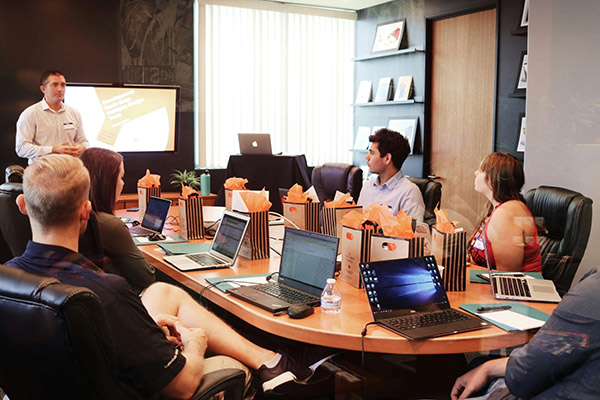Running an effective training session for your employees is crucial for fostering growth, improving skills, and enhancing overall productivity within your company. Well-structured training sessions not only benefit employees by expanding their knowledge and capabilities but also contribute significantly to the organization’s success. This guide will walk you through the essential steps to plan, design, and execute effective training sessions that will leave a lasting impact on your team.
Photo: via Unsplash
Identify Training Needs
The first step in running a successful training session is identifying the specific needs of your employees. Conducting a thorough needs assessment helps you understand what skills and knowledge gaps exist. You can gather this information through surveys, interviews, performance reviews, and feedback from managers. Once you have a clear picture, set clear and achievable objectives for the training session. These objectives should align with your company’s goals and address the identified needs of your employees.
Plan and Design Your Training Session
Planning and designing your training session requires careful consideration of the methods and materials that will be most effective. Choose training methods that best suit your objectives and the learning styles of your employees. This could include workshops, online courses, hands-on activities, or a blend of different approaches. Ensure that your content is engaging and interactive, incorporating real-world examples and case studies to make the material relevant and relatable.
Creating a detailed agenda and timeline for the training session will help keep you on track and ensure that all necessary topics are covered. Include a mix of presentations, group activities, and discussions to maintain interest and encourage participation.
Prepare the Training Environment
The environment in which your training session takes place plays a significant role in its success. Selecting the ideal training and conference rooms is crucial. Consider hiring a training & conference room that is equipped with all the necessary facilities. Look for a space that offers comfortable seating, adequate lighting, and the latest technology to support your training methods.
Ensure that all necessary equipment, such as projectors, whiteboards, and computers, are available and in working order. Arrive early to set up the room and test the equipment to avoid any technical difficulties during the session. A well-organized and prepared environment sets a positive tone and helps participants focus on learning.
Engage Your Employees
Keeping your employees engaged throughout the training session is essential for its effectiveness. Use interactive techniques such as group discussions, role-playing, and hands-on exercises to keep participants actively involved. Encourage questions and feedback to create an open and inclusive atmosphere.
Adapting to different learning styles is also important. Some employees may prefer visual aids, while others might benefit from hands-on activities or verbal instructions. Providing a variety of learning materials and methods will help cater to diverse preferences and enhance the overall learning experience.
Delivering the Training Session
Effective communication skills are key to delivering a successful training session. Speak clearly and confidently, using a mix of verbal and non-verbal communication to convey your message. Maintain eye contact with participants and use body language to reinforce your points.
Managing time effectively is also crucial. Stick to your agenda and avoid spending too much time on any one topic. Be prepared to adjust the pacing of the session based on the needs and responses of the participants. Encourage discussions but keep them focused and on track.
Handling questions and discussions requires patience and attentiveness. Listen carefully to participants’ questions and provide thoughtful, concise answers. If a question requires more in-depth discussion, consider addressing it during a designated Q&A segment to keep the session flowing smoothly.
Follow-Up and Assessment
The training session doesn’t end when the last slide is presented or the final activity is completed. Providing resources and materials for further learning allows employees to continue developing their skills and knowledge. Share handouts, links to online resources, and contact information for follow-up questions.
Collecting feedback from participants is crucial for evaluating the effectiveness of the training session. Use surveys or feedback forms to gather input on what worked well and what could be improved. This information will help you refine future training sessions and ensure they meet the needs of your employees.
Measuring the effectiveness of the training session can be done through assessments, performance evaluations, and observing changes in employee behavior and productivity. Set benchmarks and track progress to determine the impact of the training on your team and the organization as a whole.
Conclusion
Running an effective training session for your employees requires careful planning, engaging content, and a supportive environment. By identifying training needs, designing interactive sessions, selecting ideal training and conference rooms, and following up with assessments and feedback, you can ensure that your training sessions are impactful and beneficial. Investing in your employees’ development not only enhances their skills and job satisfaction but also drives the overall success of your organization. Keep these strategies in mind, and you’ll be well on your way to mastering employee training.



